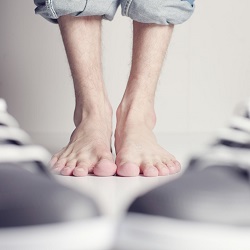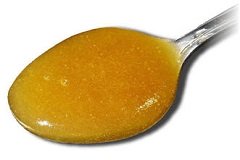athlete foot
Athlete Foot Remedy with 1 Natural Ingredient – Honey
Also known as Tinea Pedis, athlete foot is a skin disorder caused by a by parasitic fungus called dermatophytes with symptoms of ugly dry and flaky skin, red inflammation or blistering, especially between toes . It is almost painless but in severe cases, there can be itching and a burning sensation on the toes and sole of the foot.
Many people think the athlete foot condition is the same as the obnoxious smelly feet. They are not.

While athlete foot is caused by fungi, smelly feet or foot odor is caused by bacteria which produce an embarrassing unpleasant odor. People who have smelly feet often are afraid that others around them would detect an odor when they remove their shoes or socks.
I always feel that athlete foot is a misnomer. Neither does the name describe the physical condition of the foot nor does it imply that only the athletes get infected. Contracted by contact with infected skin particles in bath rooms, in public swimming pools, saunas, gymnasiums or other public areas, athlete foot can happen to anyone.
If fungal skin disorder is left untreated, it also can spread to different areas of the foot apart from the toe spaces, and the whole foot may become very sore, painful, and smelly when the skin is broken and bacterial infection sets in.
Usually, direct transmission from person to person is rare. As fungus thrives in warm, moist, and dark places, perspiration and lack of airing of the feet make it conducive for it to grow and multiply. In this Eastern part of the world where I live, it’s summer throughout the year and many of you might assume that athlete foot would be common.
However, due to the warm and humid climate, many people wear sandals and open-toed shoes outside the house and as part of our culture, shoes and socks are expected to be removed before stepping into the house, so it gives the feet a lot more opportunities to be exposed to the air and hence reduce the paranoia of fungus growth. In the Western society, the phenomena of fungus growth on the foot are perhaps partly a result of people not removing their shoes very often.
A check by the dermatologist may include scraping of the skin on your feet and examining the skin scales under a microscope to look for any fungus growth.

While there are many different over-the-counter topical anti-fungal creams and ointments for Athlete’s foot, there are also natural cures such as the honey remedy which many people are still using it today and found to be effective. It simply involves rubbing of raw honey or Manuka honey on the infected areas before bedtime and leaving it to dry overnight. Cover the treated foot with an old sock. In the morning, wash and clean with water. and dry thoroughly.
Also, propolis, a natural anti-bacterial bee product, is known to be effective in treating skin fungus.
Some tips to prevent athlete foot:
1. Wash and clean your feet daily.
2. Dry your feet thoroughly, especially in between your toes.
3. Avoid tight footwear. Keep your shoes well ventilated and dry. Open-toed sandals are best for warm weather. Go barefoot whenever possible.
4. Avoid socks made of synthetic materials. Wear absorbent, dry cotton socks, and change them daily.
5. Antiperspirants may also be used to keep the feet dry. Or, dust an anti -fungal powder into your shoes.
6. Wear flip-flops if you use a public shower. Don’t share towels or footwear.
End of “Athlete Foot Remedy with 1 Natural Ingredient – Honey” Back to “Honey as Home Remedy”.